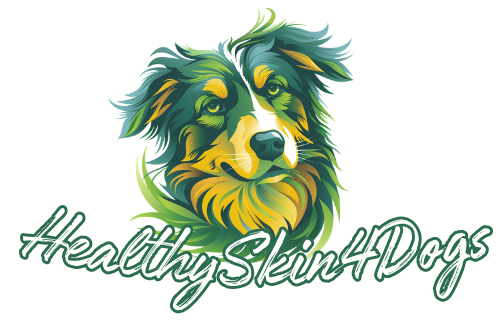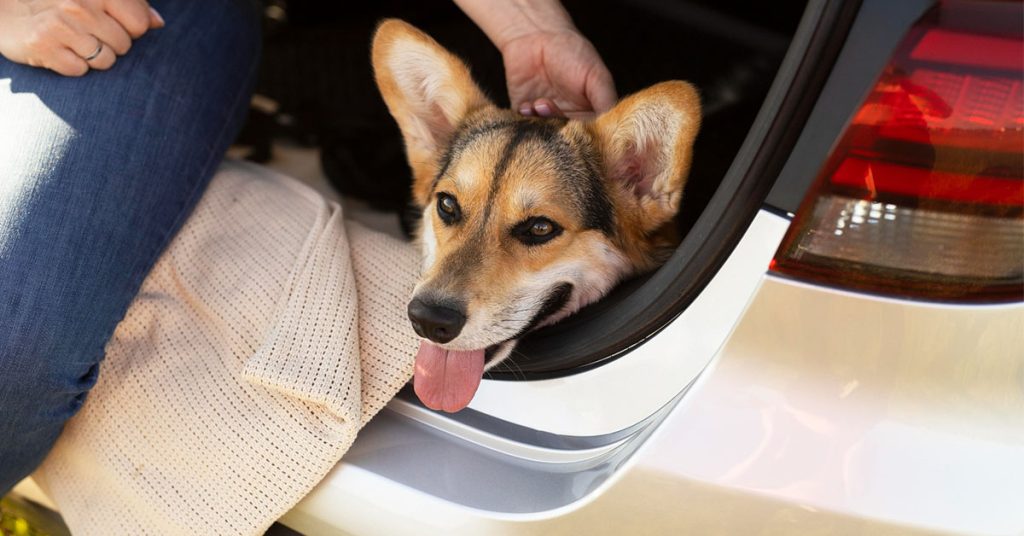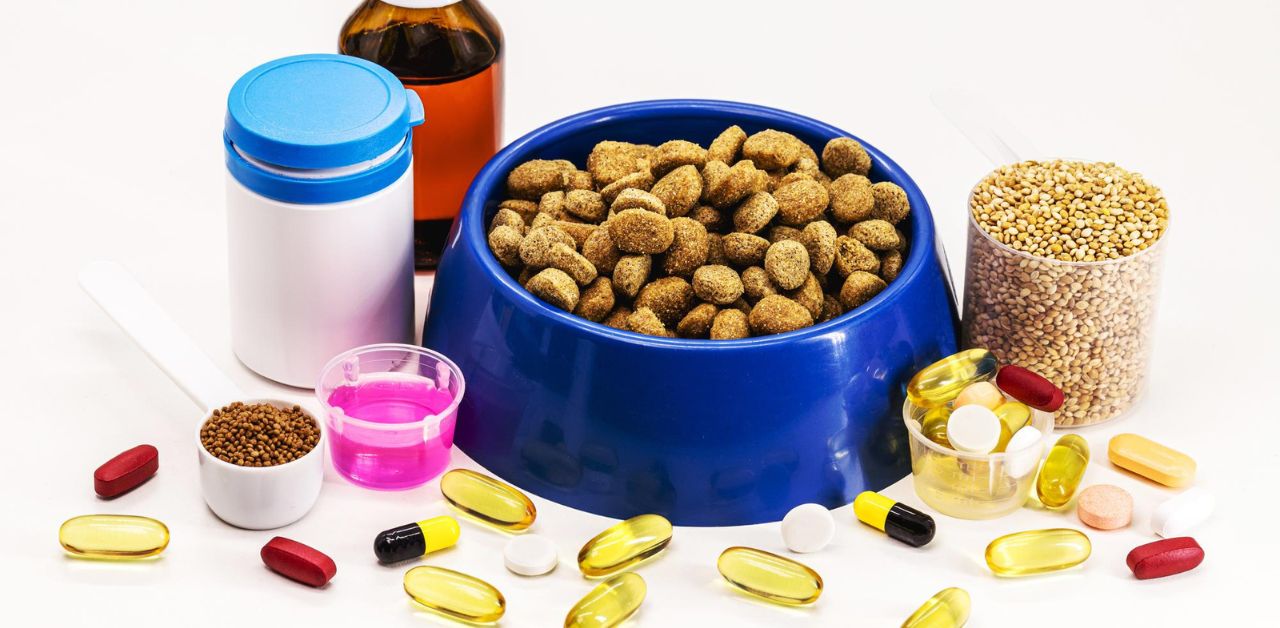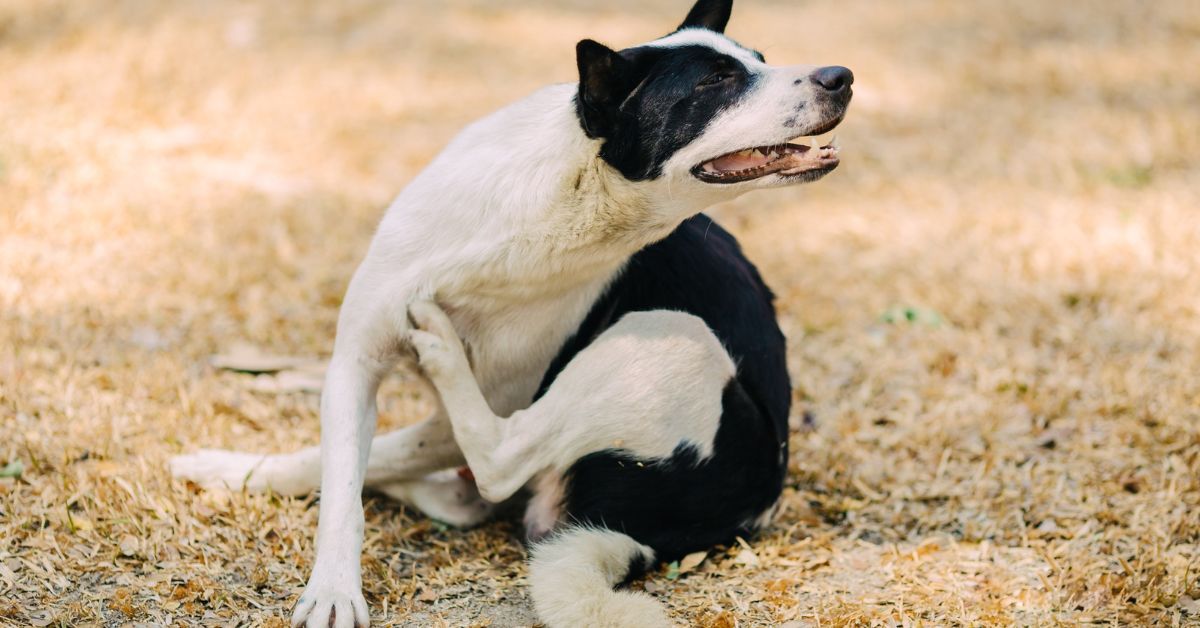When you’re driving with your pet dog beside you, you may hear something familiar: drooling. It’s no secret that dogs leave behind a trail of saliva behind them, but car rides seem to amplify this phenomenon. So, why does my dog drool in the car? In this blog post, we’ll explore why dogs drool in the car, uncovering the usual causes and possible concerns. Let’s dive in.
Is There a Difference Between Dog Drooling and Slobbering in the Car?
Dog drooling can often be confused with dog slobber in vehicles. While both involve excess saliva, drooling may indicate excitement or anxiety, whereas slobbering typically results from motion sickness or heat. Understanding these differences helps pet owners address their dog’s needs during car rides effectively and ensure a comfortable journey.
Why Does My Dog Drool in the Car?
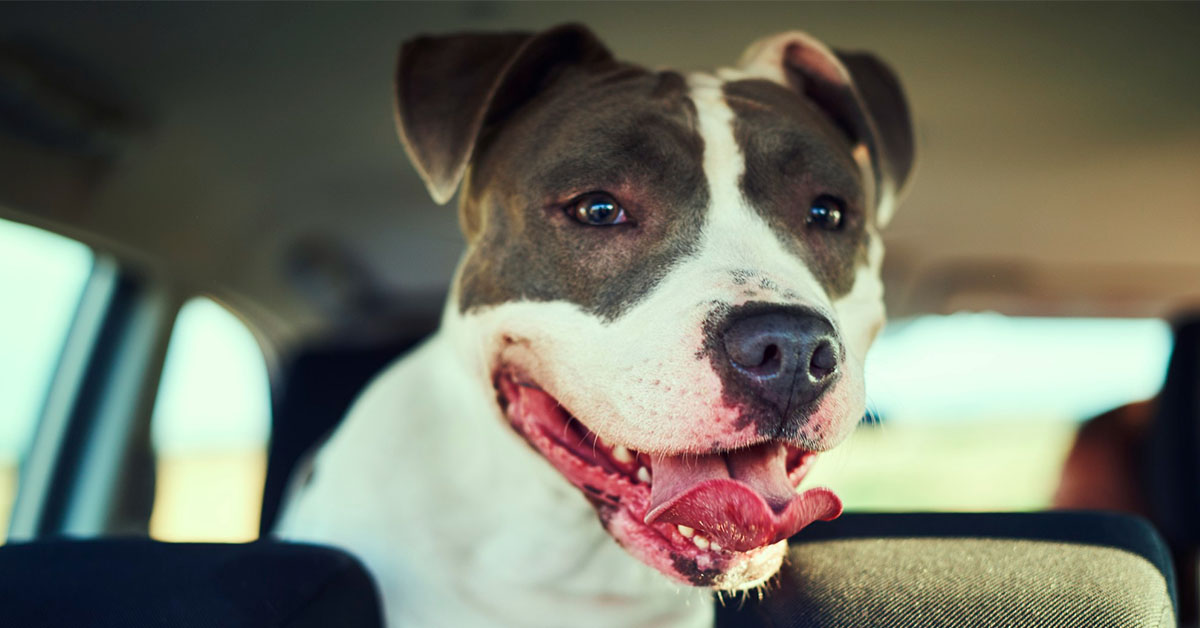
Drooling is a common occurrence in dogs, and the car ride triggers it more frequently. When pet owners understand the reasons behind this behavior, they can better manage their pets’ comfort and well-being. The following factors may cause your dog to drool in the car:
Anxiety
As a physical manifestation of their distress, anxious dogs may drool excessively in the car. Car phobias, previous bad experiences, or separation anxiety can all contribute to stress-related drooling.
Train your dog to tolerate car rides by desensitizing him, using calming aids like pheromone sprays or vests, and gradually acclimatizing him to his environment. Consult a professional behaviorist if anxiety persists.
Excitement
Car rides are a common cause of dog drooling due to excitement. The anticipation of a destination, meeting new people, or engaging in fun activities can make your dog drool. Dogs may pant, wag their tails vigorously, and even jump around with excitement, all of which can increase salivation. It is essential to ensure your dog’s comfort and safety during car rides to prevent excessive drooling from becoming a distraction.
Motion Sickness
Motion sickness can affect dogs, too, resulting in drooling, nausea, vomiting, or restlessness during car rides. Motion and unfamiliar sensations in a car can disrupt your dog’s inner ear balance, triggering motion sickness symptoms.
Provide a comfortable and stable travel environment for your dog. Keep the car well-ventilated and limit food intake before trips. You can also talk to your veterinarian about potential medications or supplements to manage motion sickness.
Heat Stroke
In hot weather, dogs can get heat stroke, which causes excessive panting, drooling, rapid heart rates, and weakness. Even for a short time, dogs can overheat in a hot car, leading to severe health complications.
Don’t leave your dog unattended in a parked car, especially during warm weather. If your dog seems to be suffering from heat-related distress, make sure it has shade, water, and ventilation.
Dental Pain
When a dog experiences dental pain in its mouth, it may drool excessively. Inflammation, infection, and pain from dental problems can increase salivation, especially during stressful situations like car rides or eating.
Maintaining your dog’s dental health requires regular dental checkups and good oral hygiene. Consult your veterinarian if you notice signs of dental pain, such as drooling, pawing at the mouth, or reluctance to eat.
Nausea
Nausea can make dogs drool excessively, especially during car rides when motion and unfamiliar surroundings can exacerbate it. Motion sickness, anxiety, and underlying medical conditions can cause nausea in dogs.
It is suggested that you feed your dog a light meal a few hours before travel, provide a stable, comfortable environment, and speak with your veterinarian about anti-nausea medications or supplements.
Mouth Injury
Dogs suffering from mouth injuries may drool excessively due to pain and discomfort. Trauma, foreign objects in the mouth, or dental issues like broken teeth or lacerations can cause mouth injuries. Symptoms like drooling, bleeding, swelling, and reluctance to eat may indicate a mouth injury.
Your dog needs immediate veterinary care to assess the extent of the injury, treat it appropriately, and relieve its discomfort. Maintain your dog’s comfort and avoid handling the injured area.
Gastrointestinal Disorders
Excessive drooling is common in dogs with gastrointestinal disorders, particularly during car rides. Inflammatory bowel disease (IBD) or gastroenteritis can cause nausea, discomfort, and increased salivation in dogs.
Other symptoms include vomiting, diarrhea, abdominal pain, and appetite changes. The veterinarian can provide you with a thorough examination, diagnostic tests, and treatment tailored to your dog’s specific needs.
How to Prevent Dog Drooling in the Car
When your dog drools excessively in the car, you can manage their comfort and well-being by taking steps. Here are some tips:
Ensure a Comfortable Environment
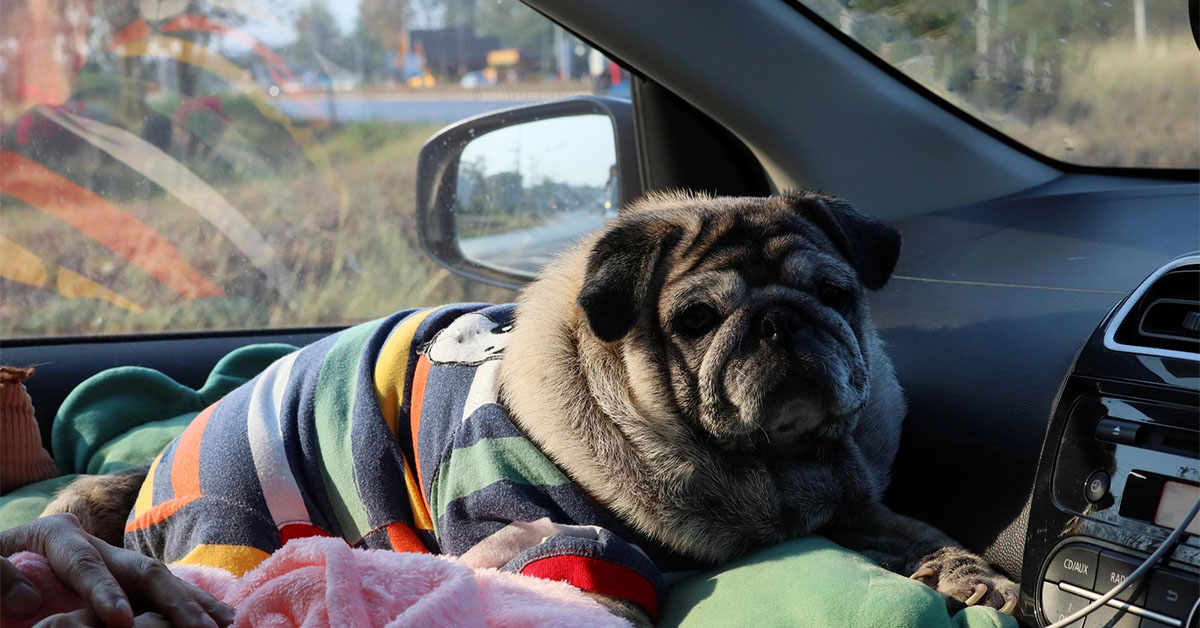
Make the car as comfortable and inviting as possible for your dog. If your pet is traveling in a crate, make sure it is ventilated or use a safety harness to keep him safe. Place familiar bedding or favorite toys in the car to help your dog feel more at ease.
Gradually Acclimate Your Dog
Your dog should be gradually introduced to car rides to reduce anxiety and motion sickness. You should start with short trips around the block, gradually increasing the duration and distance as your dog becomes more comfortable.
Minimize Stressors
Identify and minimize stressors that may cause your dog to drool, such as loud noises, unfamiliar routes, or crowded spaces. Create a relaxing environment in the car with music or pheromone sprays.
Offer Distractions
During the ride, keep your dog occupied and focused on distractions. Offer treats, interactive toys, or puzzle feeders to help alleviate boredom and anxiety.
Address Medical Concerns
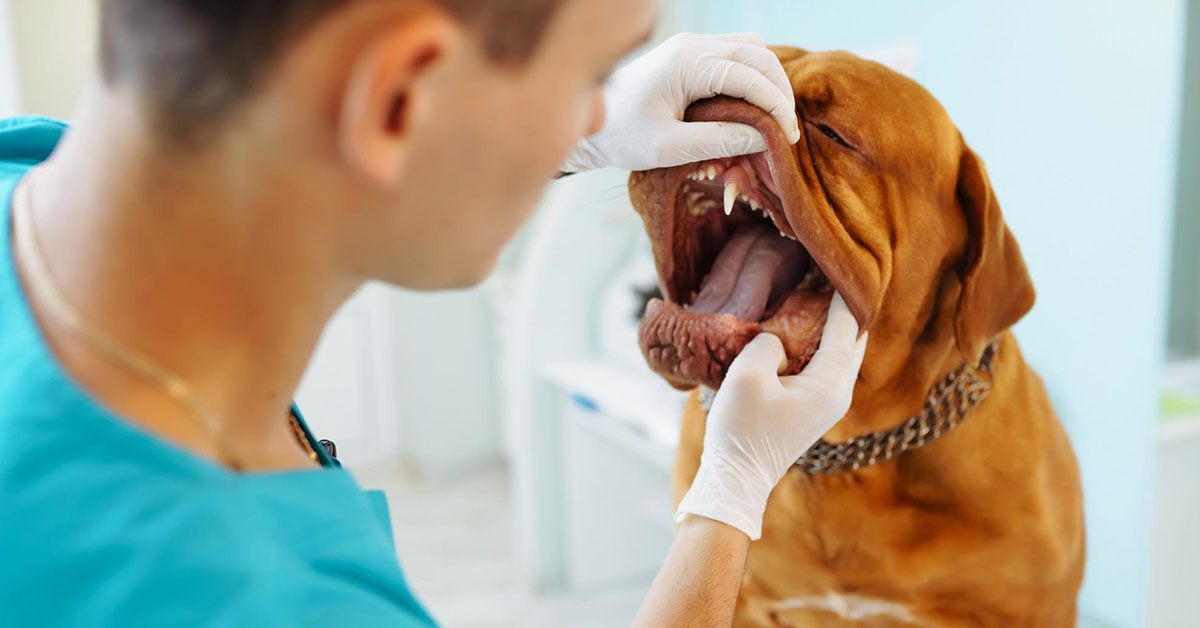
Consult your veterinarian if drooling persists or is accompanied by other concerning symptoms. A veterinarian can examine your animal thoroughly and recommend appropriate treatment if there are any underlying health issues.
Consider Anti-Nausea Medication
If your dog suffers from motion sickness or nausea when traveling, ask your vet about anti-nausea medications or supplements.
Practice Positive Reinforcement
Use positive reinforcement techniques to reward your dog for calm behavior in the car. Offer praise, treats, or favorite toys as rewards for remaining calm and relaxed during car rides.
Read More: Why Do Dogs Pant in the Car?
The Takeaway
It’s essential to prioritize your dog’s comfort and well-being when you’re driving. If your dog drool in the car, several factors may be contributing to this, but taking proactive steps can help your dog feel more comfortable.
It is essential to gradually acclimate your pet to car rides, provide distractions, and ensure a comfortable environment can help reduce drooling. Consult your veterinarian for customized advice if you notice any signs of discomfort.
